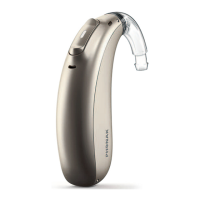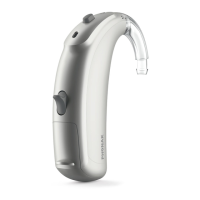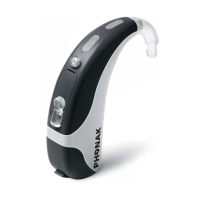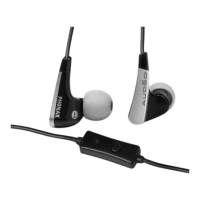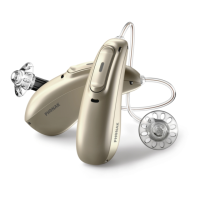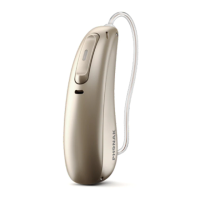64 65
Conventional hearing aids have the potential to expose
patients to higher levels of sound exposure, which might
result in threshold shifts in the frequency range aected by
acoustic trauma.
The primary criteria for the referral of a patient for a
medical or other specialist opinion and / or treatment
are as follows:
• Visible congenital or traumatic deformity of the ear;
• History of active drainage from the ear in the previous
90 days;
• History of sudden or rapidly progressive hearing loss in
one or both ears within the previous 90 days;
• Acute or chronic dizziness;
Intended patient population
This device is intended for patients from 3 years of age who
full the clinical indication for this product.
The Tinnitus Balance software feature is intended for
patients from 18 years of age who full the clinical
indication for this feature.
Clinical benet
Hearing aid: Improvement in speech understanding.
Tinnitus Balance feature: Provision of supplementary noise
stimulation which can help defocus the user’s attention
from their tinnitus. It is measured using subjective rating
scales.
Side eects
Physiological side-eects of hearing aids like tinnitus,
dizziness, wax build up, too much pressure, sweating or
moisture, blisters, itching and/or rashes, plugged or fullness
and their consequences like headache and/or ear pain, may
be resolved or reduced by your hearing care professional.
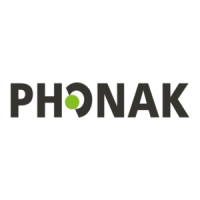
